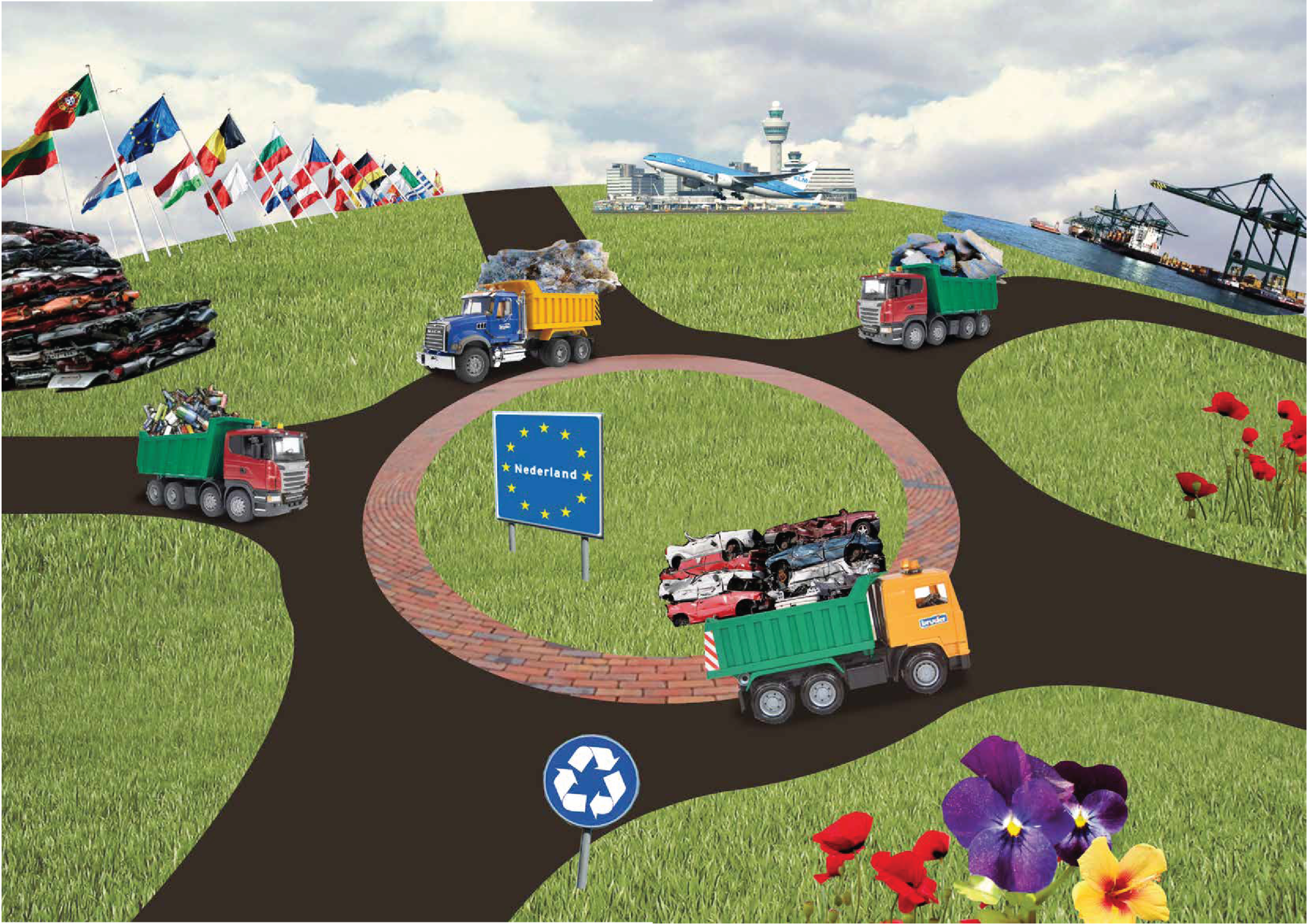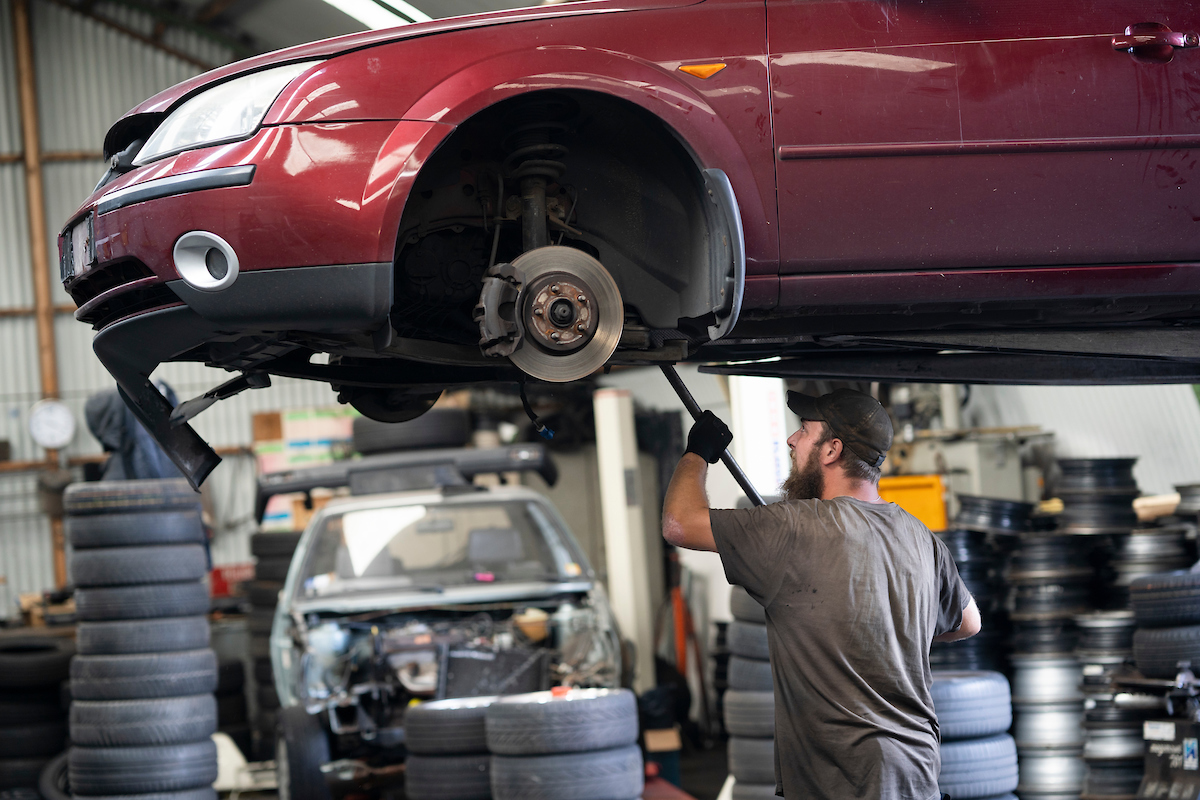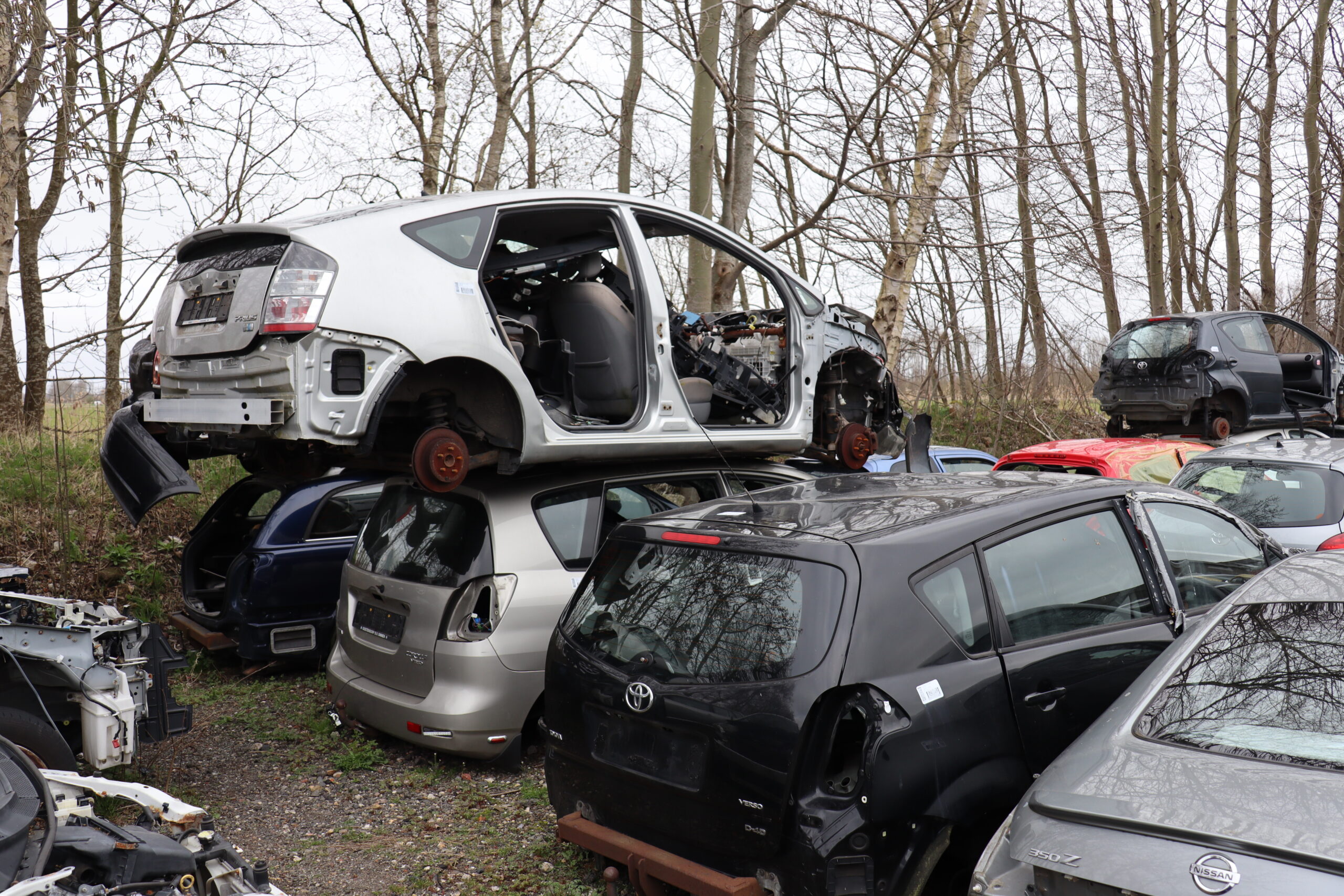Cars are full of precious metals (gold, platinum) and so-called critical raw materials such as neodymium, praseodymium, cobalt, lithium and magnesium. The recovery of these materials is often difficult and expensive. David Peck, critical raw materials expert at the Delft University of Technology, is championing a new perspective on the reuse of materials. A perspective in which the existing relationship between car manufacturers and the recycling industry will change completely.
While cars primarily consist of steel and plastics, upon closer inspection, they also contain quite a few precious metals. For example, the interior of the catalyst features an extremely thin coat of platinum or palladium. A chemical reaction with these precious metals helps purify the exhaust gases. In addition, the circuit boards of the on-board electronics contain gold and silver. According to the Urban Mine Platform, the current European vehicle pool contains over 400 tonnes of gold. At current gold prices, this has a value of almost 20 billion euros.
The so-called critical raw materials are valuable in their own way. These too are increasingly found in (electric) cars. Critical raw materials are ‘materials of great economic importance that carry the risk of supply uncertainty’, David Peck says. He is an Associate Professor at the Delft University of Technology and an expert in the field of circular construction and critical raw materials. “It is a common misapprehension that critical raw materials are exclusively scarce or at risk of running out, but that is incorrect. If there is plenty of a given material but very little of it is accessible, that material is still critical in nature.”
value increase
The list of critical raw materials used by the European Commission is a long one. It contains all the favourites of the automotive industry – such as magnesium, lithium and cobalt – as well as lesser-known elements such as neodymium and praseodymium. Both of these materials, which are used for the magnets in electric motors, have been labelled ‘extremely critical’ in Europe. “The demand is rising so rapidly that the price will increase by 150 percent in four years,” Peck says. This is unlikely to be the only material that will see such a price explosion. “About half the elements used in the industry are critical,” the professor estimates. That number also applies to the automotive industry.
Is it critical? Gold is valuable, but not a critical material. Platinum, on the other hand, is. And steel is not critical, but steel can contain critical elements
Conflict resources
It goes without saying that we need to use valuable and expensive materials sparingly. Laws and regulations are constantly adjusted to make sure this happens. On 1 January 2021, a European law has come into effect that prohibits the use of conflict materials like gold, tin, tungsten and tantalum in the EU. European car manufacturers are not allowed to use gold for their circuit boards and catalysts if this material was extracted in areas suffering from (recent) conflicts or areas where human rights are violated. Recycled materials are exempt from this law. Because this law is aimed at material importers and smelters, it will boost the use of recycled materials.

Laws and regulations
Could laws and regulations also help promote the mandatory recycling of other precious metals and critical raw materials? Professor Peck doesn’t think so. “You could force companies to come up with a better design. A product that is easier to recycle because of its smart, modular construction, for example. However, I don’t believe this is the right solution. It will cost companies vast amounts of money and presents quite a few risks – why change a working product, after all – while the companies will not be doing it for themselves. They will be doing it for the recycling industry. Eventually, they will just move their production to low-wage countries. This is a dead end.” On top of that, Peck points out that key stakeholders are always the first to have their say when it comes to new laws and regulations. “Large manufacturers have a lot more influence than the relatively modest recycling industry. They will make the case that far-reaching laws and regulations will destroy national production and lead to rising unemployment rates. I don’t think any government would accept this.”
“The remanufacturer and the recycler must work together. The manufacturer makes products modular in order to be able to refurbish them better, but the recycling industry also benefits from such a smart design”
Remanufacturing
Based on his own experience, among other things, Peck has higher hopes for a dialogue between individual market participants. These include manufacturers and remanufacturing organisations on the one hand, and recycling companies on the other. Before this dialogue can happen, however, there needs to be an increase in remanufacturing and refurbishing. “I often visit companies and ask: why don’t you consider remanufacturing? They then retort: why would we? To which I say: it will yield you an 80-percent decrease in material costs, you’ll have a guaranteed supply of the critical raw materials you need as well as a significant CO2 reduction, and you can charge your customers prices that are up to 40 percent lower. In short, it’s a way for you to make money.” Peck thinks companies are far more likely to adjust the design of their products to be more circular if they find their own motivation to do so. Circularity imposed by the authorities through laws and regulations does not yield the right motivation.
Joining forces
The recycling sector views companies in the remanufacturing industry as competitors. Once they recover their products through a ‘circle’ after a single life-cycle, the recycling stream will largely disappear. David Peck: “Remanufacturers and recyclers should join forces. The manufacturer makes their products modular to make them more suitable for refurbishment, but the recycling industry can also benefit from such smart design. They will receive clean, beautifully separated materials that can be processed with relatively little effort. This presents cost advantages.” Peck believes both parties could draw up contracts with one another. “Instead of a situation where waste costs a manufacturer money, the materials they want to dispose of will now become valuable. It’s a win-win situation.” On top of that, the remanufacturer and recycler will retain their own fields of expertise. “For producers, reusing the magnets from electric motors is an absolute nightmare. This is something that can be outsourced to a specialised contractor.”
“A misconception is that critical materials are pre-eminently scarce or are running out, but that is not correct. If there is a lot of a material, but you cannot get to it, then the material is still critical”
Research
Peck is curious to see how companies will redesign their products to make them suitable for remanufacturing. He expects that valuable components – precious metals and critical raw materials – will be combined into modules where possible. This makes recovery a lot easier. “Mixed fractions are currently still difficult to recycle. Especially in the case of highly critical raw materials such as heavy, raw metals. Their chemical composition makes separation very difficult. A single product sometimes contains dozens of critical raw materials, while you’re only able to properly recover a few. The rest are lost in the process. On top of that, the fractions that can be recovered are often small.”
Lots more research is required to improve in this area, Peck explains. This research is fortunately increasingly taking place, as the scientific community has also come to the realisation that various disciplines need to join forces. “At the Delft University of Technology, researchers in the area of recycling have only worked together with experts in the field of circular economy and life-cycle extension for a few years. Similar to the situation in the market, they barely spoke to each other before that. The key question is: how can we make products more suitable for reuse and recycling?” Peck says. “That does not mean smashing them into bits. It all starts with forming coalitions. You then get organisations like TNO involved, who join in the search for innovative solutions. Finally, standards and laws and regulations need to be considered. Not to impose any rules upon the industry, but to protect them from products from outside Europe. Those products, after all, were not designed for smart reuse or recycling.”

Foresight is the essence of management
For manufacturers and recyclers in the automotive industry, it is crucial to know whether the materials they use are, or will be, ‘critical’. In that regard, a foresight study by the European Commission would be of great value. In ‘Critical Raw Materials for Strategic Technologies and Sectors in the EU – A Foresight Study’ the Commission assesses critical raw materials. The Commission considers their use in nine technologies divided over three sectors: renewable energy, defence and space travel and electrical mobility. David Peck: “What you can see is that all critical raw materials are linked to e-mobility in relatively similar proportions. In other words: the dependency is huge. If you zoom in further, it becomes clear that traction motors present a significant demand for highly critical metals. This way, the industry knows where to start investing.”

Online cursus: Critical Raw Materials: Managing Resources for a Sustainable Future
On 13 October, the Delft University of Technology will launch the free online course ‘Critical Raw Materials: Managing Resources for a Sustainable Future’. In 7 weeks, you’ll learn:
- To discover what critical raw materials are and what role they play in a sustainable transition.
- About the challenges presented by critical raw materials.
- To analyse the importance of material systems.
- To recognise the key strategies for developing a more circular and sustainable system to use critical, raw materials.
You can enrol via:
MOOC: Critical Raw Materials: Managing Resources for a Sustainable Future | TU Delft Online







